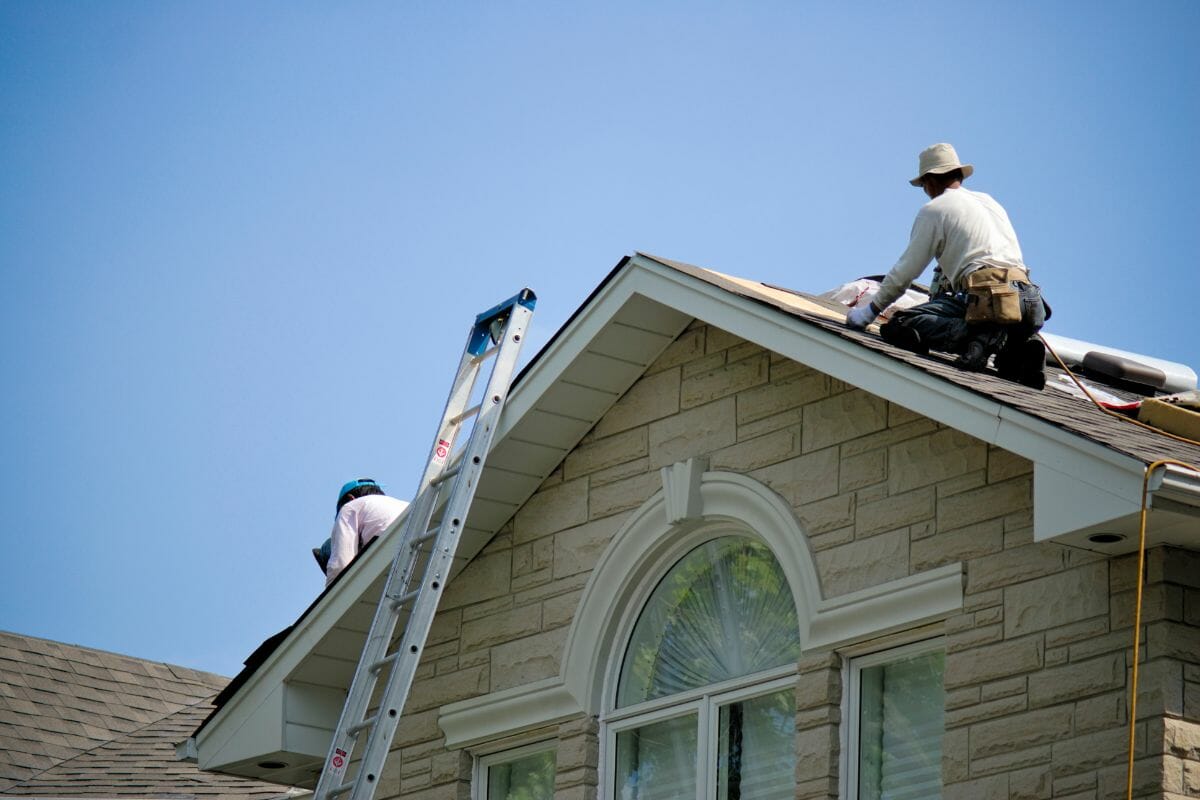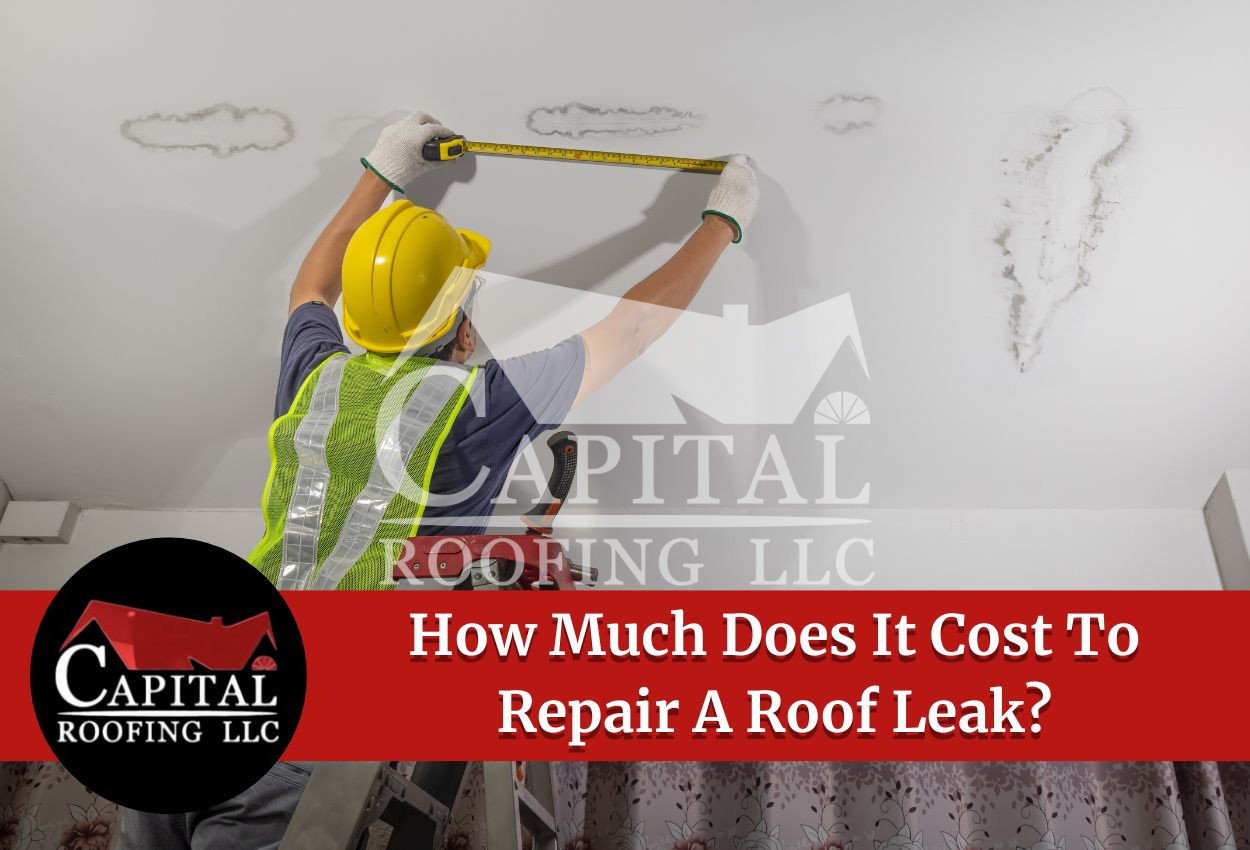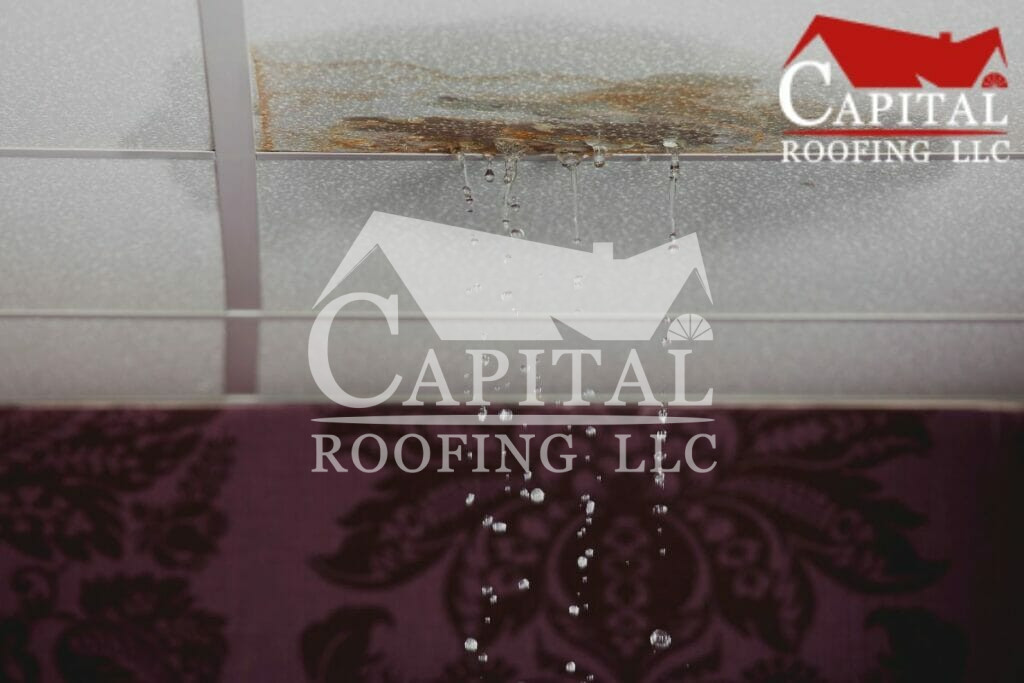
In many situations, roof leaks become a frustrating and costly problem. If your roof leaks only in heavy rain or when it’s windy outside, you must figure out what’s causing it to leak and make it a priority to fix it. Otherwise, leaking roofs can be dangerous, as they are known to cause unexpected roof failure, attic degradation, and even compromise the home’s foundation.
At Capital Roofing, we try our best to educate homeowners about their roofs, so they can take better care of their property and family. This article explains why your roof may only leak sometimes and how you can solve the issue.
Why Does Your Roof Only Leak Sometimes?
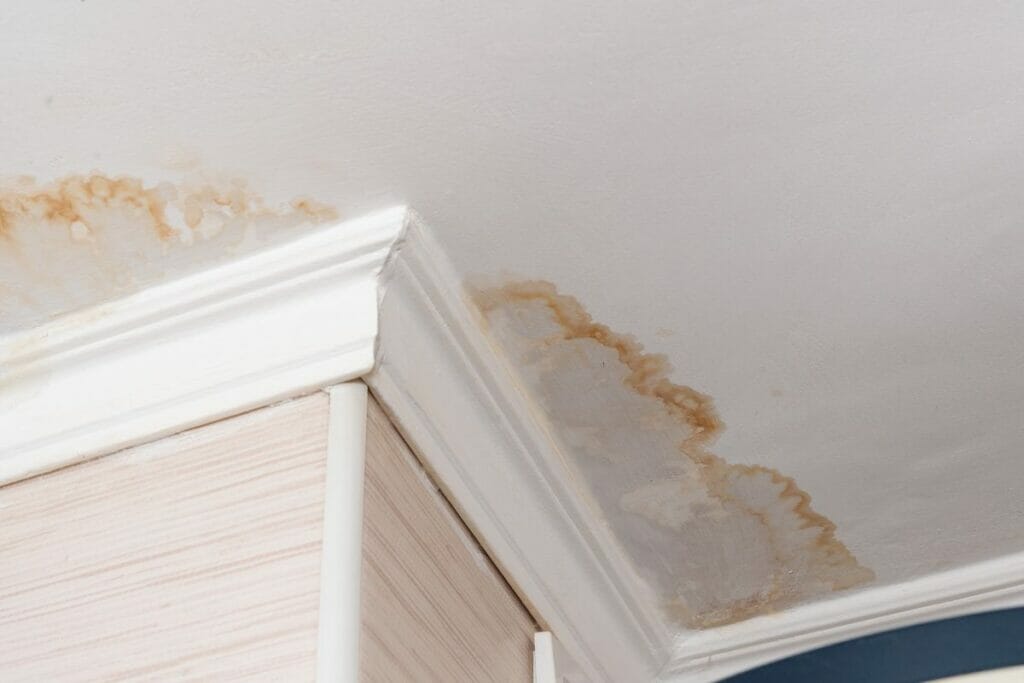
Have you noticed dripping water or a wet stain on the ceiling that you least expected? Do you often see a leak, and then it suddenly disappears the next day? This can happen due to several reasons, big and small. Here are some common reasons why a roof may only leak sometimes.
High Wind
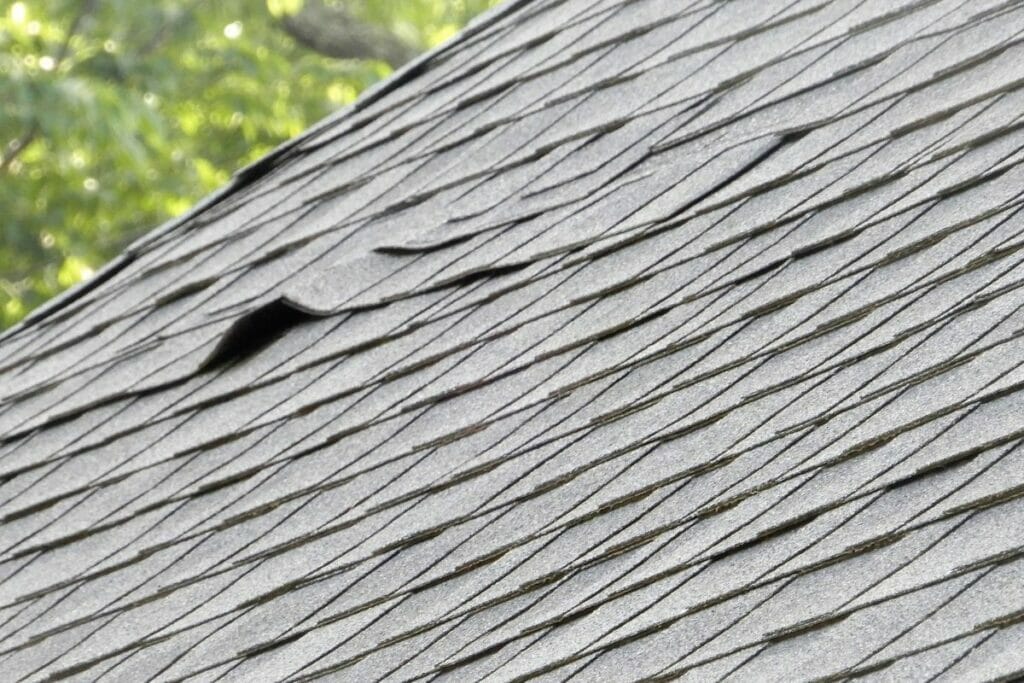
If your roof only leaks when it’s windy, this means there is a high moisture content in the air, such as when it’s drizzling outside, which may not be visible when it’s windy. Small droplets can slip behind damaged shingles or through a gap in the roof, ending up in the attic. If this happens for a long period of time, water can damage the attic floor, staining the ceiling and dripping down into your room. Additionally, wind can damage the roof by lifting shingles and exposing areas where rainwater and melting snow can enter the home.
Heavy Rain
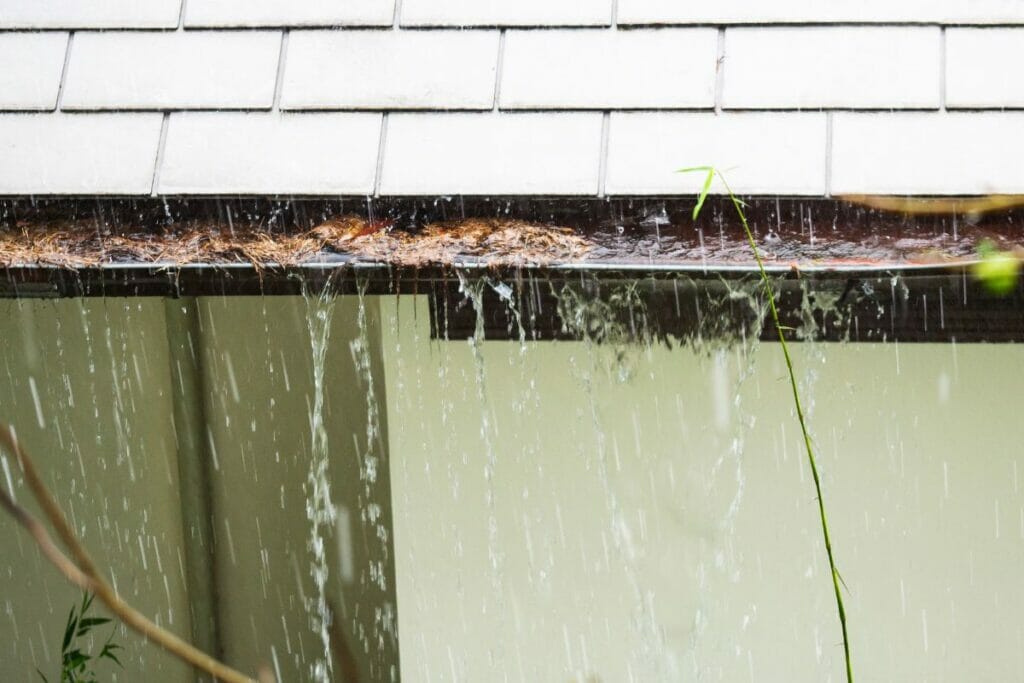
If your roof leaks only in heavy rain, this indicates poor drainage or clogged gutters, causing water to back up and seep into the home. A roof can also leak when heavy rain or hail damages the roof flashing or causes the shingles to crack. During a thunderstorm, wind-driven rain can lift ridge caps and starter shingles, causing gaps in the roof, big enough to let water in and cause water damage.
Does Your Roof Leak Even When It’s Not Raining?
If you find your roof leaking but no rain or wind to be found, it may indicate poor roof and attic ventilation. Improper ventilation leads to water leaks in the form of condensation that leak and drip down the roof.
Other reasons include clogged gutters or a poorly designed roof. Water can accumulate in places such as gutters channels that are clogged with leaves and debris, and areas on a roof that don’t shed water properly; for example, a dead roof valley. Standing water can slowly damage the roof and leak inside your home.
Apart from these, some common reasons for unexpected leaks involve problems with plumbing vents or HVAC units. Plumbing issues such as leaky or clogged vent pipes going through the roof can cause water to back up, leak, and spread throughout the roof, gradually leading to water leaks in the attic and rooms. Similarly, HVAC issues such as a broken condensation drain, or a malfunctioning rooftop unit, can also cause water to drip down the roof and ceiling.
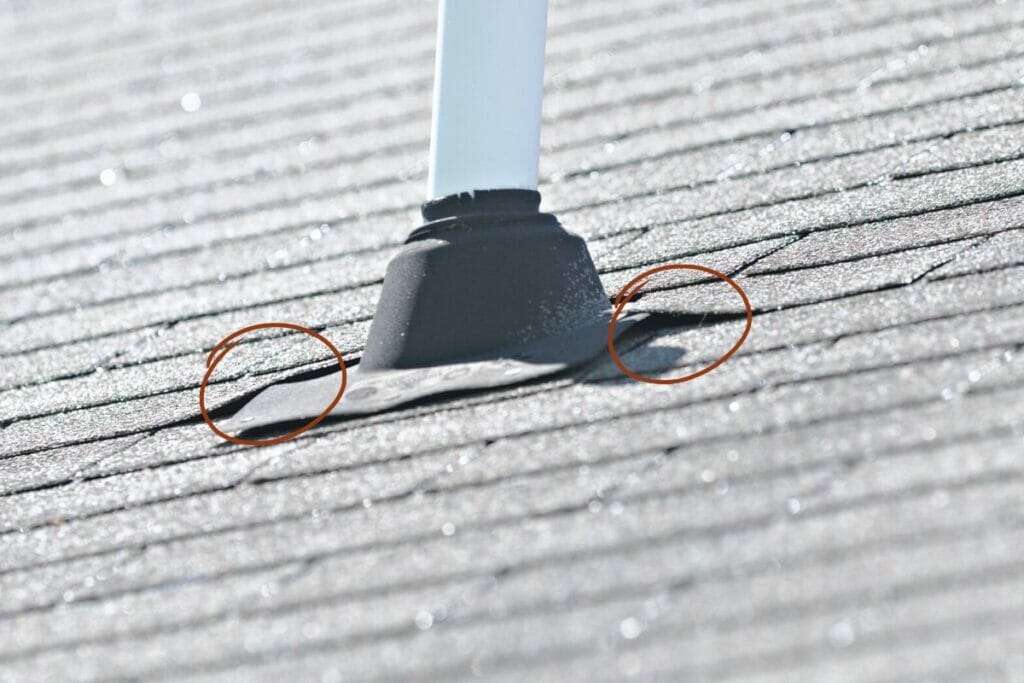
However, if your roof is leaking but the shingles look good, you need to be aware of all the areas where most roof leaks occur.
Where Do Most Roof Leaks Occur?
Most roof leaks occur in the areas that are most vulnerable to wear and tear. Apart from shingles, ridge caps, gutters, and flashing, there are many more areas along a roof that are prone to leaks. Here’s a list:
- The eaves and rakes, otherwise known as the edges of the roof
- Roof Valleys, which are areas where two roof planes meet
- Roof accessories, such as vents, skylights, and chimneys
If your roof is leaking around vents, it may mean that the boot of the vent pipe is broken or the flashing around the roof vents is damaged. You can also spot a leak where the roof meets a wall, as that area needs a different type of flashing and protection. If that’s not provided, water can easily leak through the gap at the roof-to-wall connection.
Whether your roof has been leaking for years or you are experiencing it for the second or third time, act quickly.
What Should You Do If Your Roof Is Leaking?
If your roof is leaking, the first thing you should do is note the leak’s location and put a bucket under it to contain the water. You should also take pictures of the wet stains on the ceiling and make a video of the dripping water. This helps you keep a record of the leak, so you can explain it to your roofing contractor and an insurance company.
It is crucial to act fast to stop the leak and avoid further damage to your home. Otherwise, the water may reach other parts of the roof and interior, causing severe damage that could jeopardize the foundation too! There are also times when you might not know how to find a roof leak source because it’s hidden inside the roofing layers. The best way to stop and prevent roof leaks is to hire the most reliable and experienced roofing contractor in your area.
If you live in Claremore or surrounding areas in Oklahoma, we can help you stop leaks once and for all! If you are wondering, “Does homeowners insurance covers roof leaks”, we will help you understand that too.
Trust Us To Fix Your Roof Leak For Good!
If you’re tired of dealing with roof leaks, we are here with the best roof repair services in town. At Capital Roofing, we’ve been improving homes for years! Hundreds of Oklahoma residents trust us with their homes, and we are proud to be their #1 choice. With years of experience and training, we know how to fix a roof leak for good.
Our team will work quickly and efficiently to fix the root cause of the problem, so you can rest easy knowing that your roof is in good hands. Don’t let a leaking roof ruin your day. Call us at (918) 260-4075 for a free roof inspection and estimate on your roof leak repair cost. Our honest and friendly team will keep you up to date about the progress of the work, so you can schedule your day accordingly.
We hope our article “Why Does My Roof Only Leak Sometimes?”, was helpful to you, and look forward to helping you out.

